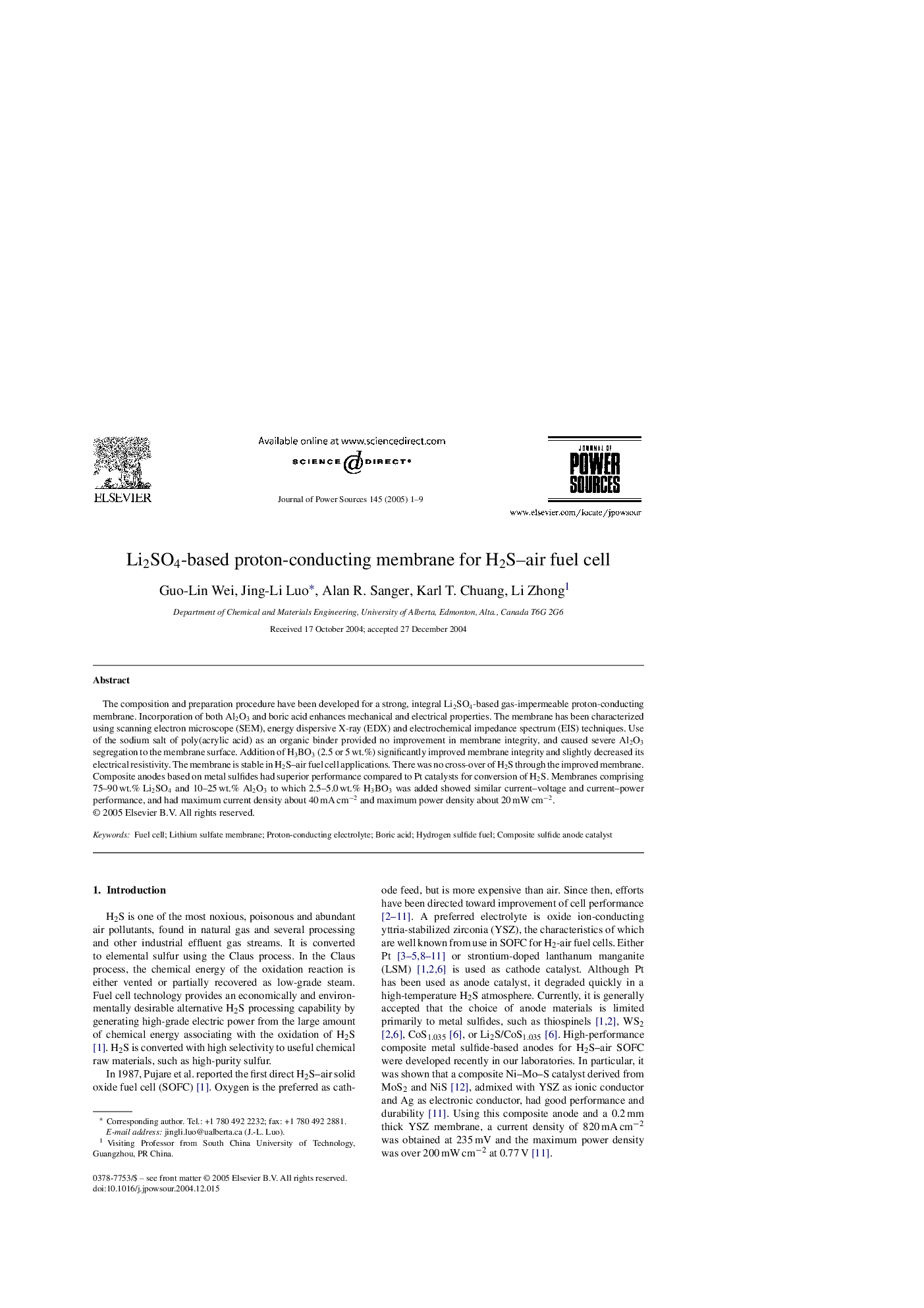| Article ID | Journal | Published Year | Pages | File Type |
|---|---|---|---|---|
| 10568040 | Journal of Power Sources | 2005 | 9 Pages |
Abstract
The composition and preparation procedure have been developed for a strong, integral Li2SO4-based gas-impermeable proton-conducting membrane. Incorporation of both Al2O3 and boric acid enhances mechanical and electrical properties. The membrane has been characterized using scanning electron microscope (SEM), energy dispersive X-ray (EDX) and electrochemical impedance spectrum (EIS) techniques. Use of the sodium salt of poly(acrylic acid) as an organic binder provided no improvement in membrane integrity, and caused severe Al2O3 segregation to the membrane surface. Addition of H3BO3 (2.5 or 5Â wt.%) significantly improved membrane integrity and slightly decreased its electrical resistivity. The membrane is stable in H2S-air fuel cell applications. There was no cross-over of H2S through the improved membrane. Composite anodes based on metal sulfides had superior performance compared to Pt catalysts for conversion of H2S. Membranes comprising 75-90Â wt.% Li2SO4 and 10-25Â wt.% Al2O3 to which 2.5-5.0Â wt.% H3BO3 was added showed similar current-voltage and current-power performance, and had maximum current density about 40Â mAÂ cmâ2 and maximum power density about 20Â mWÂ cmâ2.
Related Topics
Physical Sciences and Engineering
Chemistry
Electrochemistry
Authors
Guo-Lin Wei, Jing-Li Luo, Alan R. Sanger, Karl T. Chuang, Li Zhong,
